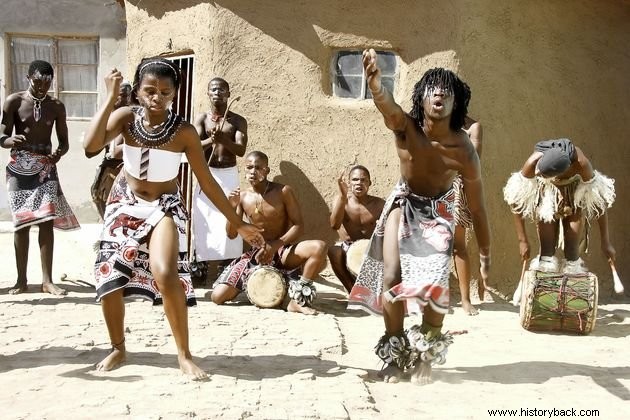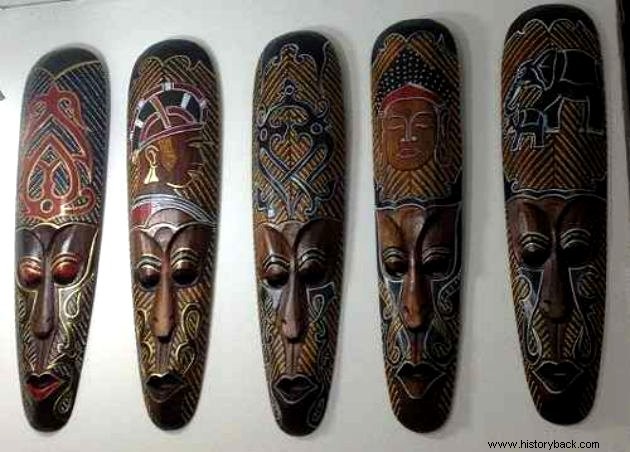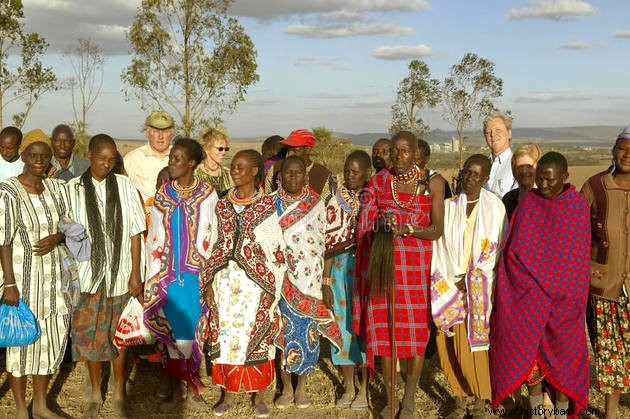African culture must always be observed in the plural, given its millenary existence and its vast diversity. Remember that Africa is not a country.
Archeology points to Africa as the longest inhabited territory on the planet. This has resulted in a profusion of languages with more than a thousand languages, religions, political regimes, material housing conditions and economic activities.
Currently, the African continent occupies a fifth of the Earth, with more than 50 countries and almost 1 billion inhabitants.
Ethnocentrism, Eurocentrism and African cultures
It is a known fact that African history was written and told by European settlers.
Travelers, missionaries and colonial leaders were responsible for the first accounts of the culture of African peoples.
Thus, in addition to being captured to feed colonial slavery, these peoples were usurped of all their rights, including the right to tell their own story.
“Ethnocentrism” and “Eurocentrism” in European sciences during the 19th century are responsible for the conception of African cultures.
In this bias, they are considered primitive or barbaric manifestations, typical of the first stages of civilization.
Today, with the independence of African countries, there is an effort to recover African cultural traditions, as well as the constitution of a local historiography.
General aspects

African cultural manifestations suffered intense destruction by colonial regimes, which leads modern African nations to clash with Arab nationalism and European imperialism.
In terms of traditional cultures, much has been preserved and spread across the African continent, especially due to migratory flows through Africa.
This allowed the preservation and combination of various cultural aspects among the peoples of the continent.
Furthermore, it is also worth mentioning that most of these cultures are based on oral traditions, which does not mean the absence of writing.
See also:General aspects of Africa:map, countries and economyPolitical organization
African peoples can be nomadic and wander in the desert or settle in territory to build great empires.
They can also be formed by small tribes or large kingdoms, where the political head and the high priest can be the same person.
Whether ruled by lineage clans or by specific social classes, these peoples will constitute great material and immaterial patrimonies present to this day.
These goods reflect the history and environment in which they originated. Therefore, they represent aspects of tropical forests, deserts, mountains, etc.
See also:African LegendsAfrican Religions
In religious terms, several cults are present in Africa, especially Islam and Christianity. In addition to them, traditional religions stand out, often seen as the practice of magic and witchcraft.
Considered by Europeans as animistic peoples, a part of Africans revere the spirits of trees, stones, among others, and accept coexistence with unknown forces.
Each African people has their mythological origins to explain their origins. These traditional religions have, as a rule, a pantheon and are dedicated to the worship of ancestors and the deities of nature.
The best known form of these religions involves the cult of Orixás (deities of Yoruba or Nagô origin) and encompasses a wide variety of beliefs and rites.
On the other hand, material and spiritual life in African religions tend to blur the line between the sacred and the profane. These dimensions are conceived as inseparable and inseparable.
Plastic Arts

We must consider that a large part of traditional African artistic production was made not to be seen and the material used in its manufacture had a very high symbolic value.
These pieces can be carved, cast, painted, braided, woven and used as body adornments, costumes and items for sacred or everyday use.
Generally, African artistic products represent the founding ancestors and feature geometric, anthropomorphic, zoomorphic or anthropo-zoomorphic figures that teach humanity to produce and reproduce.
In turn, the famous African masks have elaborate designs and are used in ceremonies and rituals.
Renowned artist Pablo Picasso (1881-1973) drew heavily on these masks, as well as African iconography, to create an artistic style known as Cubism.
Metallurgy was known and used to manufacture weapons, tools and ornaments, being more common in the savannah regions. Another very typical type of African artistic production is ivory sculptures (Ioruba and Bakongo peoples).
Dance and cooking
Traditional African dances and music are also well known, marked by drumming and well-accentuated body movements, such as the rebolado.
Finally, African cuisine stands out, seasoned with spices with strong and spicy aromas, with which dishes based on meats, vegetables, and even insects are prepared.
Coconut milk, palm oil, yams and beans, etc., are typical of Africa.
Main peoples and cultures of Africa

The main African civilization was undoubtedly the Egyptian, who built the first African empire more than 5 thousand years ago.
Ceramics from Nok (Nigeria) point to a highly developed civilization that lived from the 5th century BC. to the 2nd century A.D.
Later, in the 13th century, the mighty Kingdom of Kongo emerged. Other peoples, such as the Berbers (Nomads of the Sahara desert) and the Bantu (region of Nigeria, Mali, Mauritania and Cameroon) also constituted large population groups in Africa.
Finally, Africans began to be colonized by Europeans from the 15th century onwards. Upon reaching the 19th century, they were already fully under the domination of European metropolises until the second half of the 20th century.
See also: Ancient Egypt
African cultures in Brazil
African cultures had a great influence on Brazilian cultural formation and the diversity of origin of Africans enslaved in Brazil directly reflects the variety of peoples existing in Africa.
Most of these populations were of Bantu, Nagô and Jejes, Hausa and Malês origin.
There are many cultural aspects that suffered African influence in the country, however, we can highlight:
- candomblé, an Afro-Brazilian religion based on the cult of the orixás, from which Umbanda arises;
- capoeira, a fight-dance practiced by former slaves created in Brazil;
- the cuisine, with various seasonings and typical dishes, such as vatapá, caruru and acarajé.
In the musical area, African rhythms are found in almost all Brazilian styles:maxixe, samba, choro, bossa-nova. In dance, samba is the greatest expression of Afro-descendant culture.
Read Also :
- Afro-Brazilian Culture
- Pre-Colonial Africa
- Congada
- Ethnocentrism
- Eurocentrism
- Carimbó:origin, types, instruments, clothes, choreography and music
